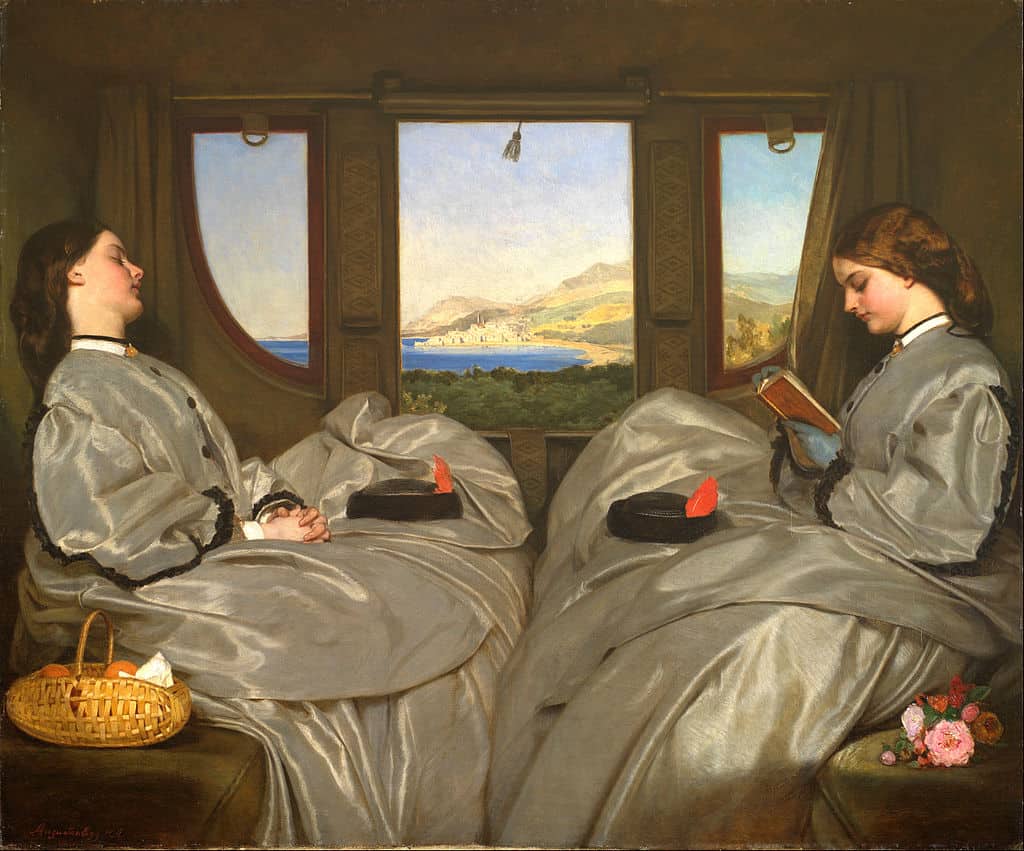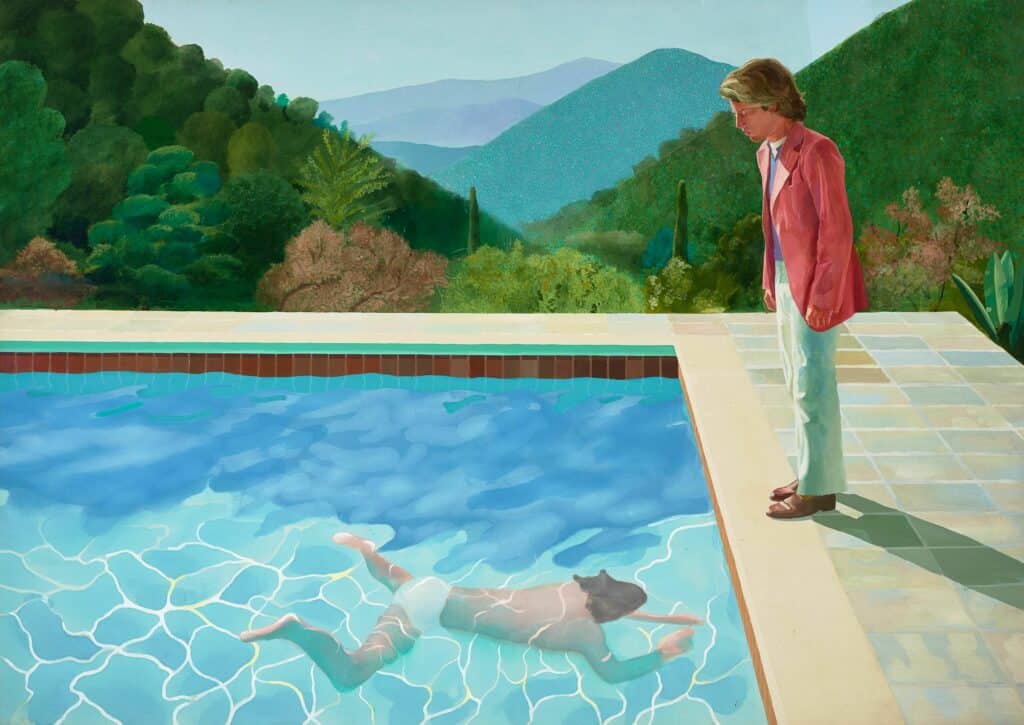Articles and Features
10 Artworks To Get You in the Mood For Summer
By Adam Hencz
Summertime, leisure in its manifest forms, and the celebration of the long, warm days have occupied artists of all times. The topic offers opportunities that range from plein-air experimentations to satirical and thought-provoking social commentary on the contradictory nature of contemporary life. This week, we put together a selection of paintings and photographs that capture the season’s airy moods featuring relaxed Parisian scenes, Californian swimming pools and dystopian seaside landscapes alike.
1. Édouard Manet, Le Déjeuner sur l’herbe, 1863
No artists have captured the carefree nature of the summertime quite like the Impressionists. The unusual picnic of Édouard Manet‘s Le Déjeuner sur l’herbe caused scandal and controversy at the time due to the artist’s intentional break with Classical principles, refreshing the concept of female nudity by depriving its representation of a biblical or mythological theme and showing a feminine nude in an everyday, modern urban setting instead. This was one of the many rejected paintings from the 1863 Paris Salon that was instead shown at its counter-exhibition nearby at the Salon des Refusés.
2. Georges Seurat, Un dimanche après-midi à l’Île de la Grande Jatte, 1884-86

Courtesy The Art Institute of Chicago.
Another icon of late 19th-century painting is Georges Seurat’s large-scale work A Sunday Afternoon on the Island of La Grande Jatte (1884–1886). The painting juxtaposes members of the burgeoning modern city’s different social classes spending a warm, sunny afternoon with various park activities. The work was celebrated not only because of its depiction of social harmony, but also because of Seurat’s unique style that came to be known as Pointillism, which consisted in separating colour into small touches placed side-by-side.
3. Jean Frédéric Bazille, Scène d’été, 1869

An often overlooked principal figure of the Impressionist movement, Jean Frédéric Bazille created figurative paintings inspired by the relaxed atmosphere of contemporary life, that challenged the aesthetic conventions of the day and helped to lay the groundwork of the movement. Moving from a well-off family from Montpelier, he enrolled in the atelier of Charles Gleyre in Paris, where he became friends with fellow young art students and painters, notably Claude Monet, Pierre-Auguste Renoir, Alfred Sisley and Édouard Manet. Like his earlier painting Réunion de famille (1850), Scène d’été captured friends and family members in the outdoors and was exhibited at the Paris Salon in 1870.
4. Pierre-Auguste Renoir, Le déjeuner des canotiers, 1882

During the late 19th century, boating became one of the most favoured pastimes among Parisian artists. Pierre-Auguste Renoir immortalised this phenomenon in The Luncheon of the Boating Party often referred to by its French name, Le déjeuner des canotiers, one of his most celebrated paintings. Depicting a group of Renoir’s friends and set on the sunlit balcony of the Maison Fournaise, a restaurant that offered rowboat rentals, this piece captures the joyful summer atmosphere of Parisian life at the time.
5. Augustus Leopold Egg, The Travelling Companions, 1862

This mysterious painting shows two young women in shimmering dresses, travelling by train along the coast near Menton, on the Côte d’Azur in France, a summer journey often undertaken by Egg himself. The swinging tassel of the window blind suggests the relentless movement of the train carriage, while the two identically dressed companions pass the travel time in their own idyllic, closed worlds.
6. Edward Hopper, Sailing, 1911
The coastline of Cape Cod was a refuge and a source of inspiration for American Realist painter, Edward Hopper. Recently celebrated for his late-career paintings resonating with the moodiness and melancholy that is distinct of our times, Hopper was actually a man of the ocean, though his early paintings are much forgotten. In 1913, at the Armory Show, Hopper earned $250 when he sold his first painting, Sailing (1911), the first of his many works capturing the tense stillness of the vast oceans.
7. David Hockney, Portrait of an Artist (Pool with Two Figures), 1972

When British artist David Hockney arrived in Los Angeles with sunny optimism in the late ‘60s, he fell in love with the city and California. One of the most famous images in the artist’s oeuvre, the iconic painting that led Hockney to break the auction record for a living artist, entitled Portrait of an Artist (Pool with Two Figures) (1972), depicts a commonplace subject of California cities: a private swimming pool. The swimming pool quickly became his symbol for the hedonism, sexual freedom, and joie de vivre he experienced in California compared to grey-skied Britain. Hockney would never leave the subject entirely behind.
8. René Burri, Stable and Pool, 1976

The swimming pool is also a central element to the serene architectural landscapes of Mexican minimalist master Luis Barragán. Magnum photographer René Burri visited Barragán and photographed his work on several trips to Mexico in the ‘60s and ‘70s. Burri paid tribute to his friend, capturing the essence of his architecture, and creating the sense of peace and contemplation that is at the heart of his geometric buildings and colourful spaces.
9. Martin Parr, The Last Resort series, 1983
Another member of the Magnum photo agency, Martin Parr is recognised as a satirist of contemporary life. His series, The Last Resort is a humorous depiction of the working class enjoying their free time on summer vacation, shot in New Brighton in the early ‘80s. The series is a collection of unromantic images of simple summer holidays in vivid, provoking colours. Leisure and consumption are central concepts of Parr’s work, expressed through unusual visual experiences that changed the face of documentary photography in Britain.
10. Txema Salvans, Perfect Day #30, 2020
Irony plays a central part of the visual language of Txema Salvans as well, who has been travelling up and down the Mediterranean coastline for the past 15 years, photographing people at leisure by the seaside during summer. Attracted by the decaying coastal housing developments, superstores, industrial and power plants, the Spanish photographer shows dystopian scenes dominated by ill-favoured man-made structures, that suppress the negligent but innocent human protagonists.
Relevant sources to learn more
Impressionism: The Movement That Went Against The French Art Academy
David Hockney
Martin Parr
Txema Salvans



